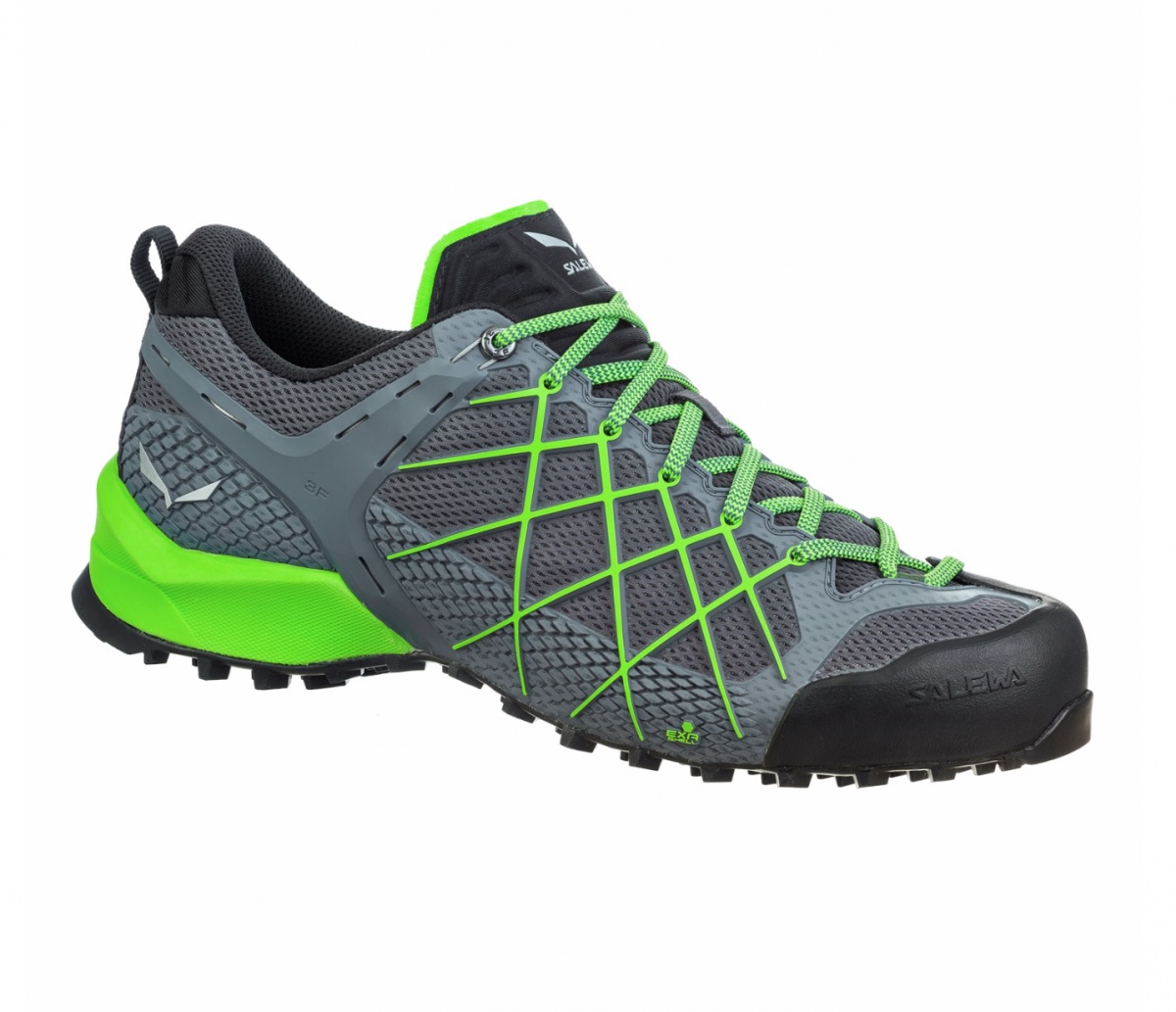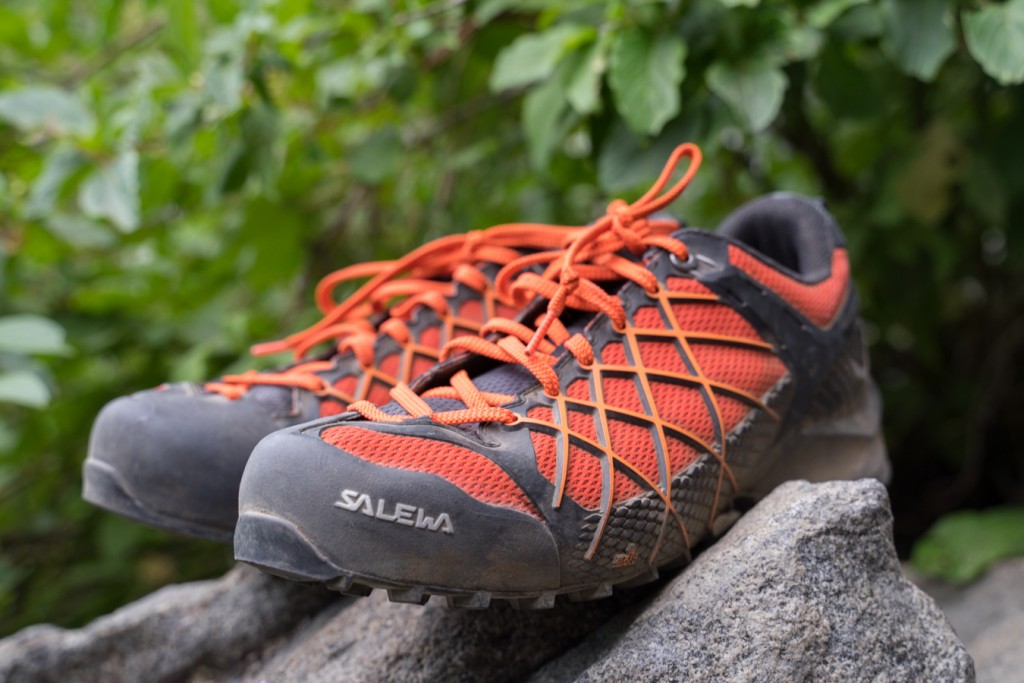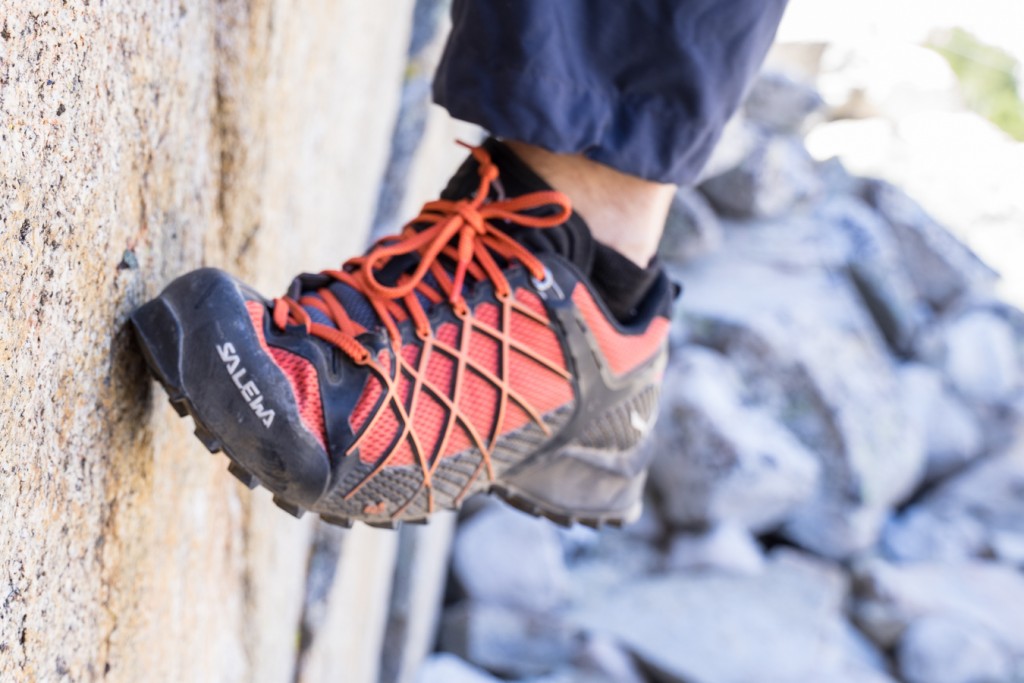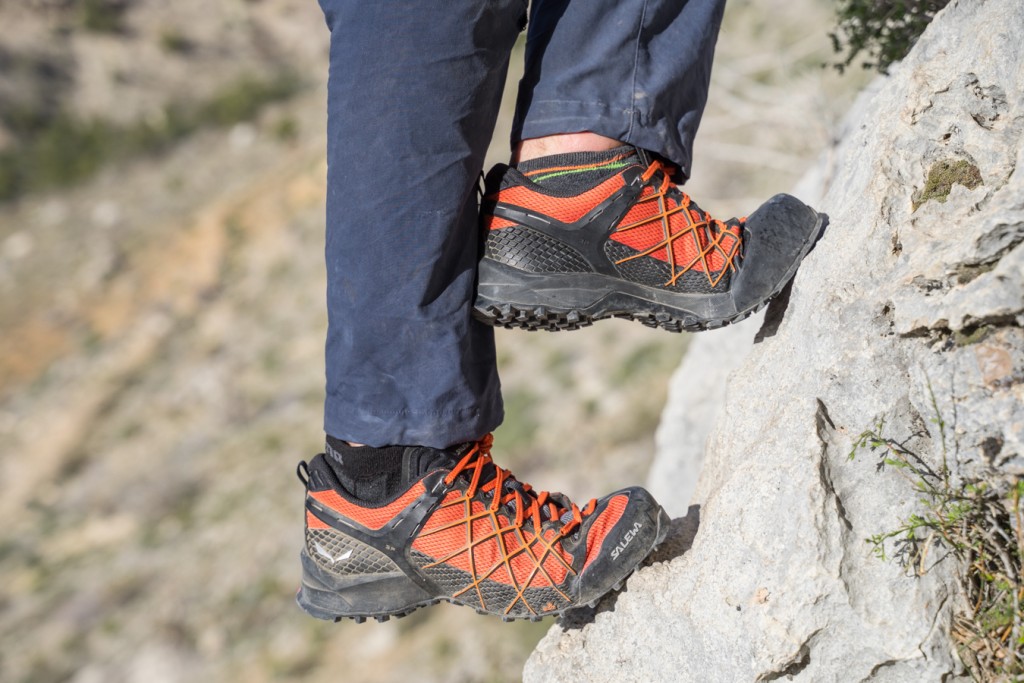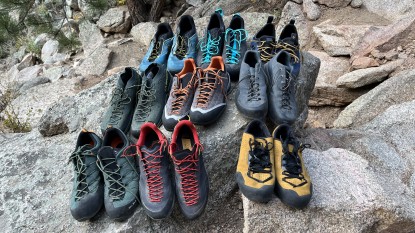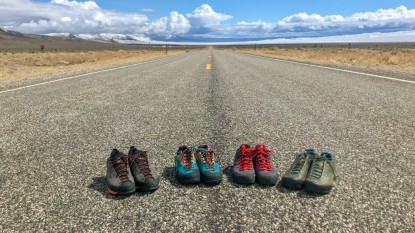A current color choice for the Wildfire is shown above. Though the colors have been updated, the shoe design remains the same as the model we tested here.
February 2020Salewa Wildfire Review
Our Verdict
Our Analysis and Test Results
Performance Comparison
Climbing Ability
The Wildfire uses POMOCA rubber, a compound that doesn't grip as well as Vibram or Stealth, at least in the experiences of our testers. This significantly detracts from the Wildfire's climbing scores.
Edging
One tester described these shoes as “stiff but not so sensitive.” He means that the shoe is supportive enough to toe into edges, but the thick outsole makes it difficult to feel secure on the hold as you would with lighter weight, less supportive model.
Smearing
Slab climbing is where the type of rubber on the shoe most impacts performance, and in our “solo the Northwest Books of Lembert Dome test,” our tester felt downright gripped on the short slab section of the route. Our lead tester wished he had a rope, or at least a different pair of shoes.
Crack Climbing
The rubber over the top of the toe on these shoes gives it some protection from the violent twisting and jamming of crack climbing. These shoes are high volume and comfortable, but this limits their ability to climb hand-sized cracks. Combine that with their sub-par edging; we'd like to keep our TC Pros on for the offwidths too, thank you very much.
Hiking Comfort
The Wildfire excels when it comes to hiking comfort. They have a highly adjustable lacing system and a plastic “exoskeleton.” Both features contribute to a stable hiking experience. One tester comfortably ran ten miles in these shoes when he forgot his trail runners. The mesh uppers ensure that the Wildfire breathes well, much better than the leather options. If high mileage is a bigger concern on your approaches than security while scrambling, these are a decent shoe for humping heavy loads over longer distances. But! With the La Sportiva TX4 you can solidly hike and scramble, so why not have your cake and eat it too?
Support
The EXA shell technology combined with the stiff, thick (for an approach shoe) outsole make for a supportive shoe. The Wildfire is ready for long approaches and heavy loads. One tester spent multiple weeks hiking heavy loads up to 50 lbs (mostly water) up to sport crags in the Utah hills and found the support more than satisfactory.
Weight & Packability
These shoes have a pull tab/clip-in loop on the heel, though it's a bit hard to slide a carabiner through compared to larger loops. The high volume, thick sole, and large lugs don't exactly make for a sleek package when clipped to your harness. For those of you paying attention to ounces (as you should be), these kicks add 26.6 oz (size 9.5) to your harness.
Value
This is a seemingly durable hiker. However, its value pales if what you need is a climbing-capable approach shoe.
Conclusion
Salewa produces capable, well-constructed hiking shoes, and they'll get you to the crag in comfort, no doubt. But the Wilfire just isn't up to the climbing standards laid down by brands that also make climbing shoes, and this prevents it from scoring as high overall.


